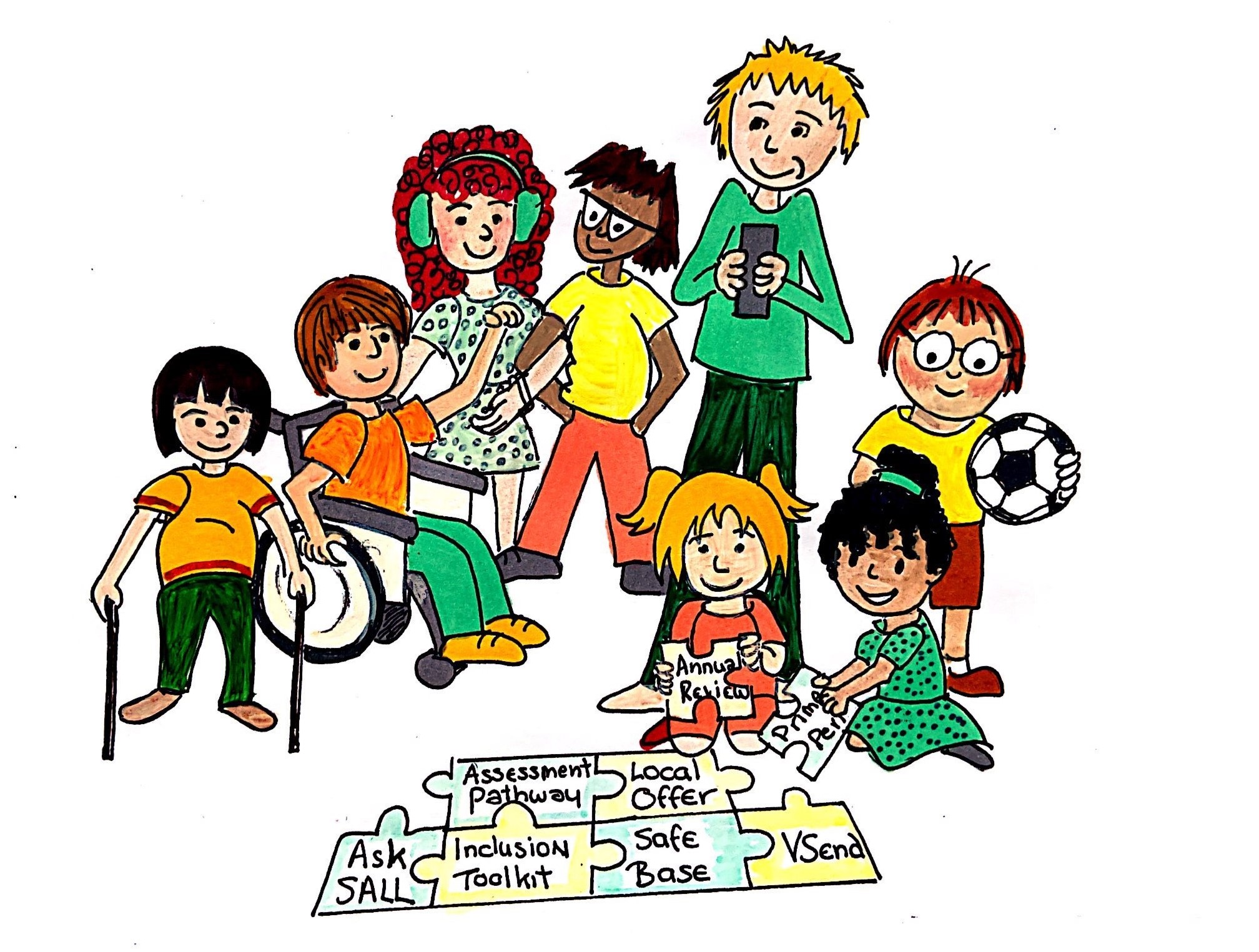Level 5-6 strategies to support specialist interventions
High quality teaching and targeted strategies, approaches and adaptations for pupils should be implemented and supplemented
0-5
In addition to previous strategies
- teaching and learning approaches that provide very finely graded and practical tasks which give opportunities for frequent repetition and reinforcement
- additional adults support the child individually, under the direction of the teacher/manager to:
- access regular individual support
- encourage independence
- create frequent opportunities for peer to peer interaction
- monitor the progress of the child using structured methods
- assistive technology to access everyday learning tasks and or large print learning resources to enable full access to curriculum
- the child will struggle to access information displayed at a distance and will require access to specialist technology at some point
- group discussions to be carefully managed and paced in order to participate
- access to quiet working space for small group, consolidation, checking of equipment and specialist assessment
- high level of input from a habilitation specialist to develop early mobility, orientation, self-help and independence skills
- adult led small group sessions
- building may need an environmental audit by a qualified habilitation specialist
- the child may use a cane to help navigate the building and need an adult to help them move safely around the environment
- differentiation may be necessary taking into account pace of learning and visual presentation of learning materials
- environmental factors such as glare, lighting and blinds are considered. Consideration of seating position
- pupil always has own copy of all learning resources which are clear and produced in specified format
- advice from SEST is implemented in the classroom
- positive learning environment that encourages pupil confidence to use low vision aids such as magnifier
- differentiated questioning and explicit language used to explain whole group responses
- awareness that a child may need more time to complete tasks and that equality of access may mean that they need to do some things differently
- flexibility of groupings allows for buddy support, good role models and focused teaching
- a monitoring system should be in place to assess the child's needs, identify outcomes, implement support and monitor and evaluate progress, for example a One Page Profile
- planned reviews with the parent and child should take place
5-16
- assistive technology to access everyday learning tasks and or large print learning resources to enable full access to curriculum
- intensive teaching of the Braille code in order to access the curriculum
- specialist equipment to change texts/diagrams into tactile format. For example, Braille
- the pupil will struggle to access information displayed on a board and will require either specialist technology, or a trained member of staff to enable access
- ICT equipment may enhance access to learning. For example iPad linked to interactive whiteboard or enlarged print electronic resources on iPad or kindle. Speech, magnification software
- group discussions to be carefully managed and paced in order to participate
- access to quiet working space for small group, consolidation, checking of equipment and specialist assessment
- high level of input from a habilitation specialist to develop mobility, orientation, self-help and independence skills
- teacher led small group sessions
- building may need an environmental audit by a qualified habilitation specialist
- the pupil may use a cane to help navigate the school building and need an adult to help them move safely around the school environment
- several members of staff may need to learn the Braille code
- differentiation may be necessary taking into account pace of learning and visual presentation of learning materials
- teaching of strategies to facilitate independent learning
- environmental factors such as glare, lighting and blinds are considered. Consideration of seating position
- pupil always has own copy of all learning resources which are clear and produced in specified format
- advice from SEST is implemented in the classroom
- positive learning environment that encourages pupil confidence to use low vision aids such as magnifier or specialist ICT
- differentiated questioning and explicit language used to explain whole class responses
- awareness that a pupil may need more time to complete tasks and that equality of access may mean that they need to do some things differently
- flexibility of groupings allows for buddy support, good role models and focused teaching
- building up a picture of need in relation to exam access arrangements will be required. Such arrangements may include additional time, enlarged papers, rest breaks and use of equipment. This must reflect the child's normal way of working.
- staff training to raise awareness of different types of vision impairment and strategies to reduce barriers to learning. Such training may include braille courses for those supporting braille learners. For example, UEB online


